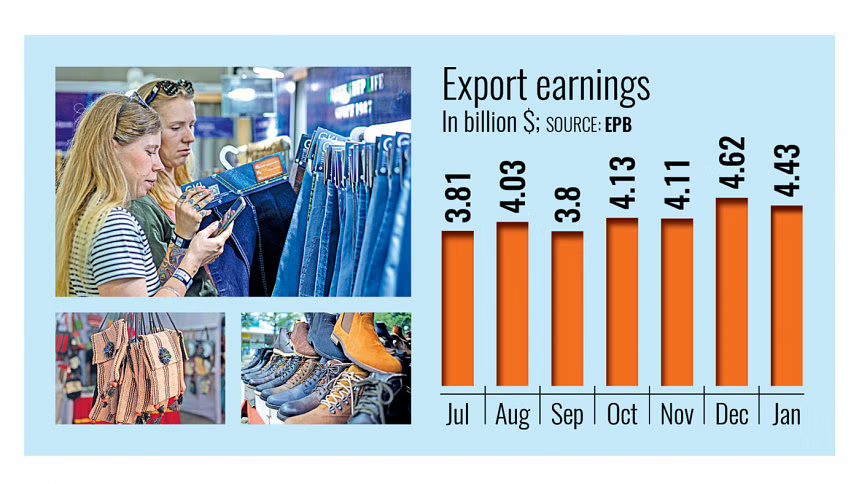Bangladesh’s merchandise exports saw a solid 5.7% year-on-year growth in January, with apparel leading the charge. The country exported goods worth $4.43 billion in January 2025, up from $4.19 billion the previous year, as per data from the Export Promotion Bureau (EPB). Ready-made garments (RMG), a key export for Bangladesh, rose by 5.57%, amounting to $3.66 billion for the month.
This growth in apparel exports helped boost total export earnings by nearly 12% in the first seven months of the fiscal year (July-January), bringing total earnings to $28.96 billion compared to $25.93 billion in the same period last year. However, traditional export items like leather, jute, and other related goods declined.
Other sectors also showed strong performance in the July-January period. Frozen fish exports grew 13.19% to $283.54 million, agro exports rose by 10.59% to $673.84 million, and pharmaceuticals by 11.29% to $132.44 million. Leather and leather goods saw impressive growth of 34.77%, reaching $669.03 million. Bicycle exports surged by 63.95%, while non-leather footwear and plastic goods grew by 34.21% and 24.32%, respectively.
Home textiles, specialized textiles, man-made filaments, and cotton exports also experienced growth, as well as handicrafts, which increased by 15.18%.
Faruque Hassan, former president of the Bangladesh Garment Manufacturers and Exporters Association (BGMEA), acknowledged that apparel exports have continued to grow despite facing domestic and international challenges. He suggested that Donald Trump’s second term in office could further benefit Bangladeshi apparel exports to the US market due to higher tariffs on Chinese and Mexican goods.
Mohiuddin Rubel, former director of BGMEA, pointed out that despite encouraging growth in RMG exports, the industry faces significant challenges, such as price pressures and rising costs. He called for deeper analysis to understand the factors driving the current trends, including market-specific performance and trade concentration.
Amid these challenges, Bangladesh’s RMG sector continues to find opportunities, especially as global trade patterns shift due to trade wars and competitive pressures.
